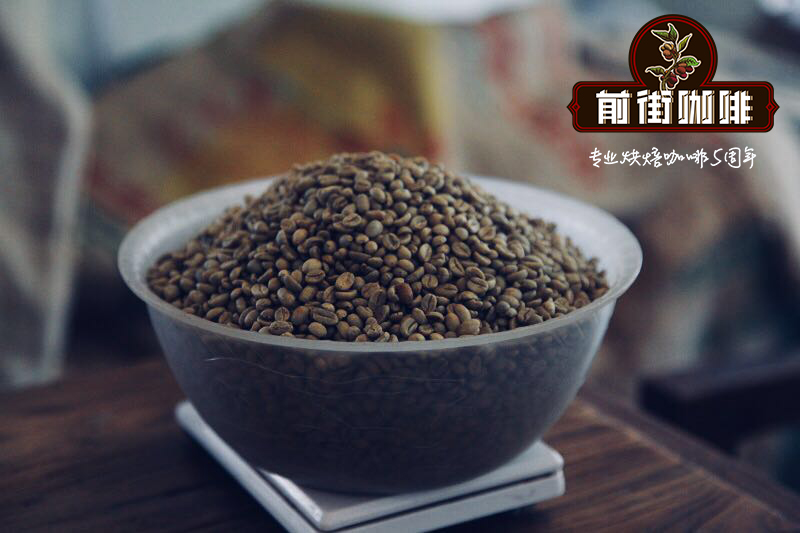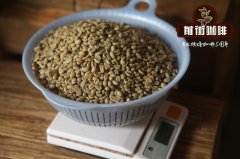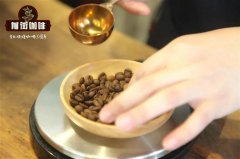Introduction of Mantenin's taste and flavor introduction to the characteristics of the producing area of Mantenin is the quality of Mantenin good?

Professional coffee knowledge exchange more coffee bean information please follow the coffee workshop (Wechat official account cafe_style)
Indonesia introduced Arabica coffee during Dutch rule in the 18th century. Mantenin, known as the 'most important coffee in the world', is the fourth largest producer in the world with an annual output of 7 million bags, of which Arabica accounts for only 10-15%. The main producing areas are in Sumatra, Java and Sulawesi. Coffee in Sumatra, known as Mantenin, is mainly produced in Sumatra, Java and Sulawesi. The coffee in Sumatra is called Mantenin, which is neither a coffee breed nor a producing area.
In fact, it is the name of a local race. Lindong is a small town near Lake Toba, which is the largest volcanic lake in the world. The hinterland is very large, so the quality of coffee varies greatly from the north to the east. And this is Mantenin, the highest grade coffee in the Lindong producing area. This area is flat at an altitude of about 1300-1600 meters, and the soil fertility is moderately rich in organic matter. Most coffee trees are shaded and planted. Traditionally, shade trees can maintain moisture and increase soil fertility. Most coffee women carry out weeding and fertilization with their bare hands, and coffee cherries are harvested and removed artificially when they turn red and mature. Wet pods are placed in a plastic bag for 10-12 hours to ferment, and then pectin, floats and shells are removed manually, rarely using a machine. Unlike Central and South America, Indonesian coffee beans have a unique semi-aqueous method, called Giling Basah treatment (the same as Wet Hulled Process). Coffee beans treated with Giling Basah have low acidity and thick Body.
Coffee farmers remove the pulp by hand, a few use machines to remove the pulp, and then sell coffee beans directly in the local village bazaar or send them to nearby concentration stations when the coffee beans are still very wet. Batak in Indonesia belongs to matrilineal society. Usually in the village market, women bring crops to do business, and their prices are very hard, so the prices of these coffee beans, which only deal with half of them in the domestic market, are very high. Even higher than coffee in Latin America and Africa, Indonesia has developed a unique shelling machine that can handle sheepskin beans with only 18% humidity, which turns the beans into a unique blue / green similar to the most strictly selected boutique beans. The export classification of high-quality Indonesian Arabica beans is manually screened, and these people are guaranteed by the government minimum wage and can earn higher bonuses based on performance.
Important Notice :
前街咖啡 FrontStreet Coffee has moved to new addredd:
FrontStreet Coffee Address: 315,Donghua East Road,GuangZhou
Tel:020 38364473
- Prev

The difference between dopa Lake Mantenin and Lin Dong Mantenin Coffee beans in the producing area of dopa Lake Mantenin
Professional coffee knowledge exchange more coffee bean information please follow the coffee workshop (Wechat official account cafe_style) Indonesia-Sumatra-Lindong Manning coffee beans-Lindong is a small town near Lake Toba, which is the world's largest volcanic lake, the hinterland is very large, so the coffee quality gap from the north to the east will be very large, and this is Lin.
- Next

Ice drop coffee it takes a slow drop of time to melt the coffee beans with a mixture of ice water with 0: 5 ℃.
Professional coffee knowledge exchange more coffee bean information please pay attention to the coffee workshop (Wechat official account cafe_style) compared with ice American coffee, ice drop coffee to use the slow drop of time to melt the flavor of coffee beans, the practice is to use 0: 5 ℃ ice water mixture, by controlling the time of ice water through the coffee powder, to bit by bit extraction, the complete extraction time takes 2
Related
- Detailed explanation of Jadeite planting Land in Panamanian Jadeite Manor introduction to the grading system of Jadeite competitive bidding, Red bid, Green bid and Rose Summer
- Story of Coffee planting in Brenka region of Costa Rica Stonehenge Manor anaerobic heavy honey treatment of flavor mouth
- What's on the barrel of Blue Mountain Coffee beans?
- Can American coffee also pull flowers? How to use hot American style to pull out a good-looking pattern?
- Can you make a cold extract with coffee beans? What is the right proportion for cold-extracted coffee formula?
- Indonesian PWN Gold Mandrine Coffee Origin Features Flavor How to Chong? Mandolin coffee is American.
- A brief introduction to the flavor characteristics of Brazilian yellow bourbon coffee beans
- What is the effect of different water quality on the flavor of cold-extracted coffee? What kind of water is best for brewing coffee?
- Why do you think of Rose Summer whenever you mention Panamanian coffee?
- Introduction to the characteristics of authentic blue mountain coffee bean producing areas? What is the CIB Coffee Authority in Jamaica?

